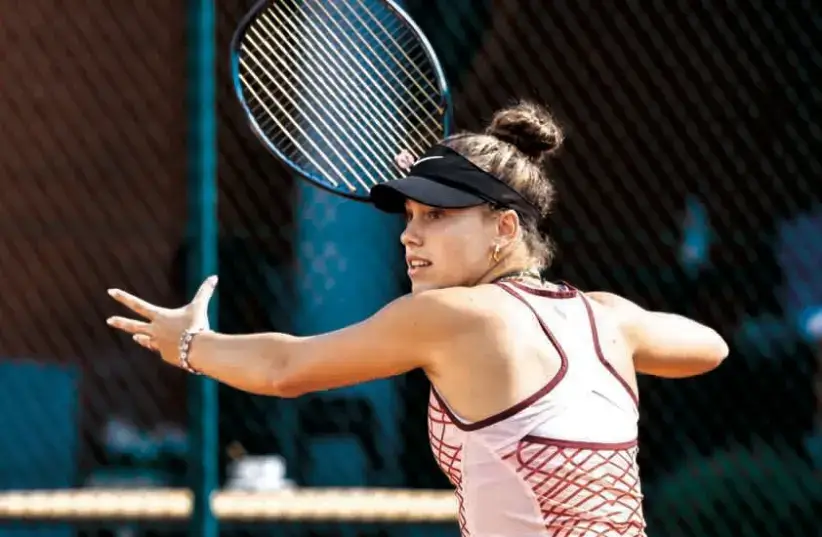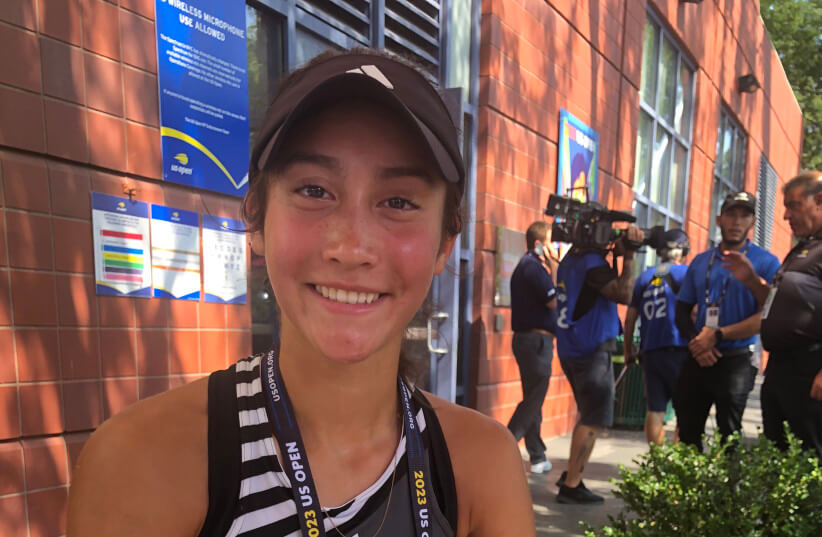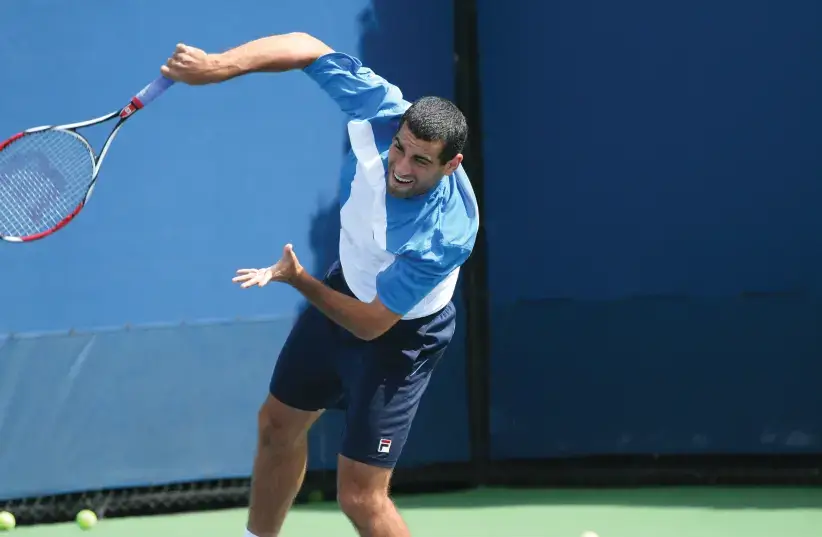Original Article On The Jerusalem Post
Glozman’s successful year continued when the then No. 2 ranked player in the country won the prestigious FILA Easter Bowl tournament.
For most American high school students, the end of August means back-to-school shopping for clothes and supplies. For 16-year-old Valerie Glozman, it also means navigating the many aspects of playing in the US Open Tennis Championships.
The articulate, good-natured tennis player from Bellevue, Washington, had the rare distinction of playing in the women’s qualifying draw and the junior’s draw – for two years in a row. And without a coach or parents with her for much of the time, Glozman has a lot to figure out on her own. Fortunately, the sensible, smiley teen is very resourceful.
“I love to play here; It is so great for my learning. I don’t get so many experiences at such a high level”
Valerie Glozman
“I love being independent,” Glozman reported in the media garden at the US Open following a tough second round loss in the juniors tournament.
“You learn how to take care of yourself. You learn a lot when you have to take care of things on your own because you make some mistakes here and there – for example, I have to find a good time to go to sleep, to get up, and to take the shuttle [bus from the hotel in Manhattan to the tennis center in Queens, NY]. And you learn from your matches if you give yourself enough time [to sleep]. I am really looking forward to college in that sense.”
Glozman will play tennis at Stanford University in Palo Alto, California. First, Glozman needs to finish high school.

ISRAELI TEEN Liam Oved both won their first matches at US Open juniors qualifying before bowing out in second round. (credit: LEO STOLCK)
Celebrities of tomorrow are unknown today
Glozman is one of the dozens of tennis players at the US Open who remain virtually unknown to most outside of a small group of fans who follow junior tennis. She and many other young players may represent the future of professional tennis, though it is a long road from the juniors to earning a living on the professional tennis circuit. Glozman may get there one day.
Last year, the then 15-year-old received a wild card when she was runner up at the US National Junior Hard Court Championships. At last year’s US Open, she lost in the second round of the women’s qualifiers and in the second round of the juniors’ tournament. Two months later, Glozman helped the US win the junior Billie Jean King Cup championship over the Czech Republic.
Glozman’s successful year continued when the then No. 2 ranked player in the country won the prestigious FILA Easter Bowl tournament. She was seeded No. 1 and captured the title for the second year in a row.
Still, Glozman was not guaranteed a slot in this year’s US Open womens’ qualifying draw. She was encouraged to apply for a wildcard given her recent successes.
“I was so grateful when I found out I got in, I started to cry!” Glozman told The Jerusalem Post. “I love to play here; It is so great for my learning. I don’t get so many experiences at such a high level.”
At this year’s US Open women’s qualifying tournament, Glozman won her first-round match against Olga Govortsova of Belarus. She then lost her second-round match against 32nd seed Marina Bassols Ribera of Spain, 6-7 6-3 6-1.
In the junior’s tournament, Glozman won her first two rounds in straight sets before losing her third round match in three sets to 11th seed Anastasiia Gureva, 6-3, 5-7, 7-5 under the blazing heat.
Her match with Gureva took place in the 93-degree heat. Down 5-4 in the final set, she began to feel sick and she was given electrolytes.
“I felt quite nauseous. I never played in this weather. I am used to playing indoors in Seattle!”
Glozman has learned a great deal from her trips to the US Open.
“I learned that I need to improve my serve and return of serve,” she notes. “My serve is a big separator [from those with big serves].
She noted that she felt even with Gureva in rallies.
“But she has an amazing serve!”
Glozman has also learned an important lesson from 21-year-old University of North Carolina tennis player Fiona Crowley, who won three matches in the women’s qualifiers to gain a spot in the main draw.
“We became friends in the qualifiers. She is so positive and bubbly and just enjoys competing out there. She gets further that way and just has a good time.“
She always pays tribute to her family.
“My mom is here at the US Open and is so supportive. My dad [who has been her longtime coach] follows the scores on his laptop.”
“I know I am causing them a little stress out there, but I am really grateful to my parents who are super invested in me,” she laughed.
Her sister, Vivian, 23, played college tennis at the University of California and at the University of Virginia.
“She currently plays pickleball full time” noted Valerie, “I have obviously learned a lot from her.”
Glozman, the daughter of a Ukrainian Jewish father and a Taiwanese mother, has only one slight critique of her parents. When asked if she will be home to celebrate the upcoming Jewish holidays, she shared: “I have actually always wanted to be part of that, but my family is not super big into holidays. They have nothing against it but they are just a little lazy with that stuff. I love cultural holidays and I do spend time with my friends enjoying all types of cultures.”
Perhaps will have opportunities to explore both her Jewish and Taiwanese heritages when she embarks on her Stanford career next year.





